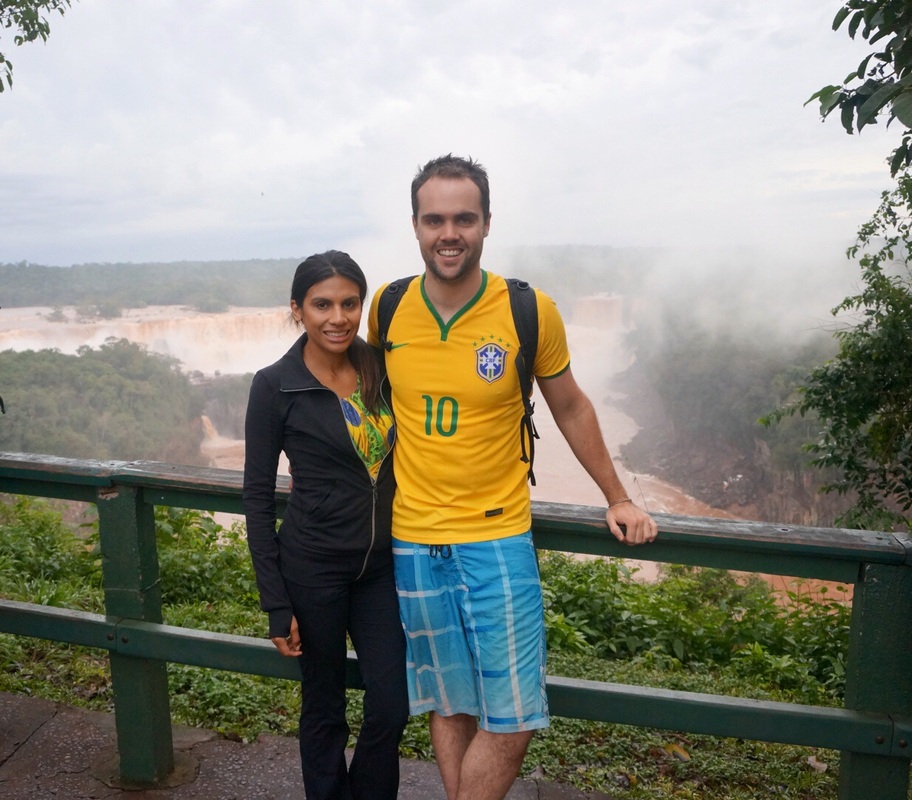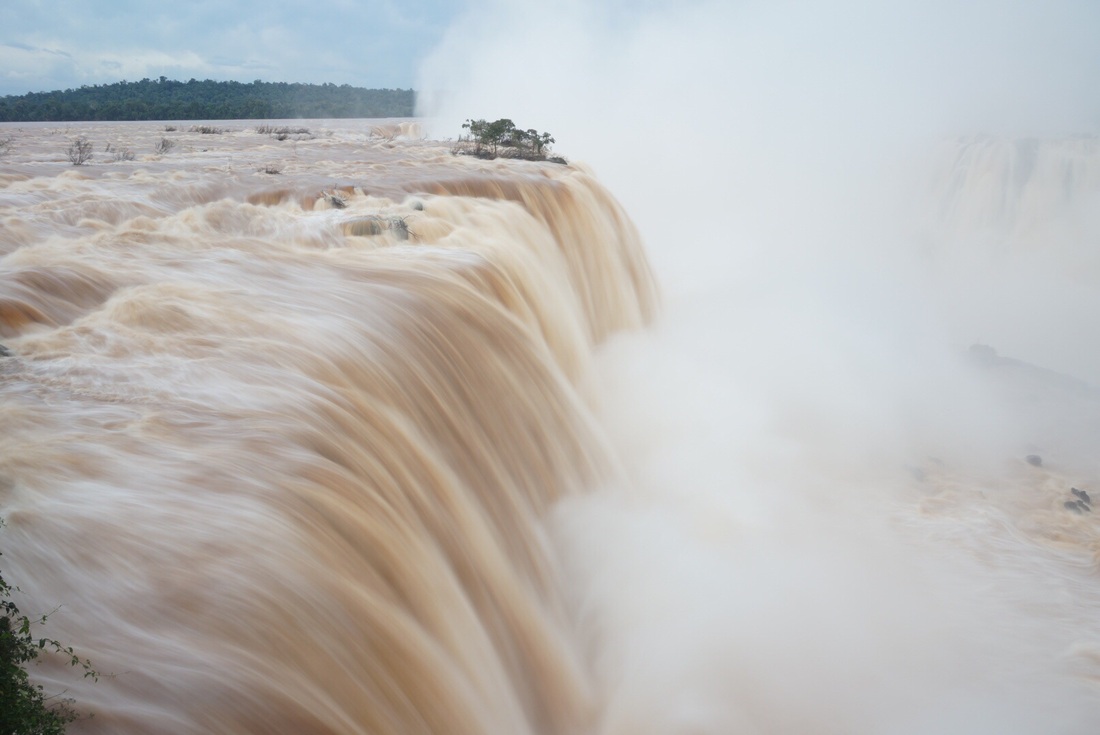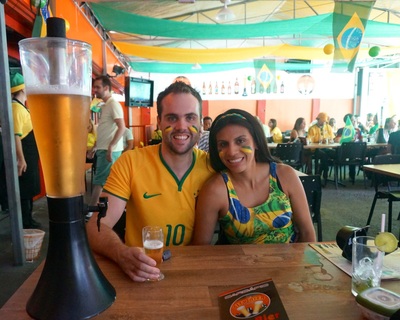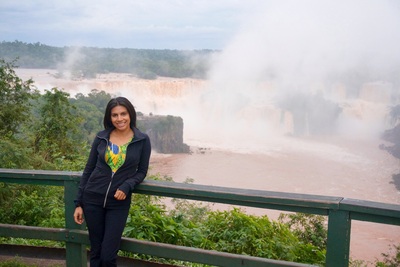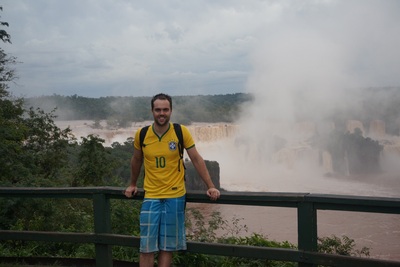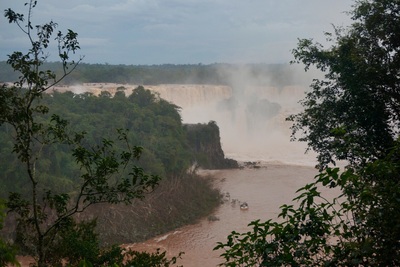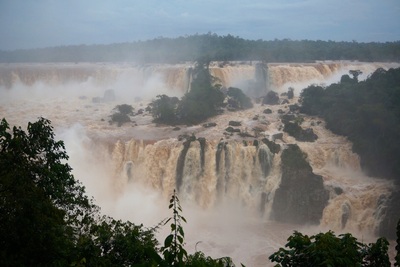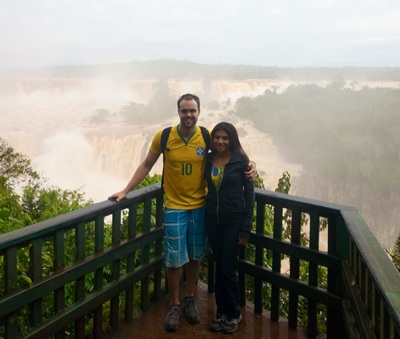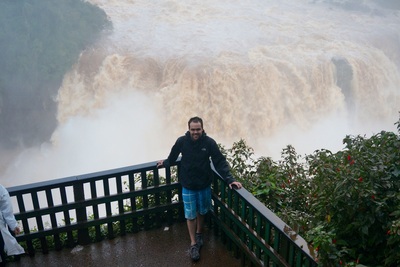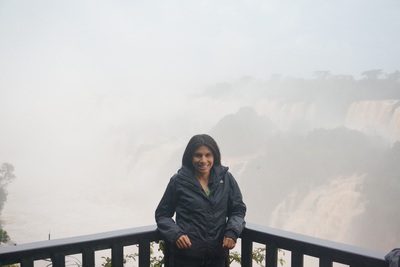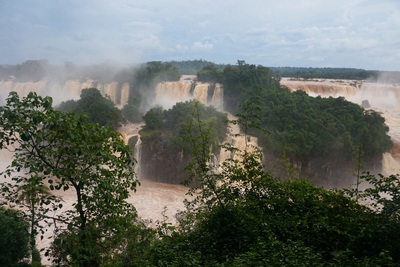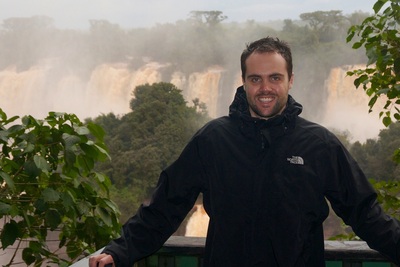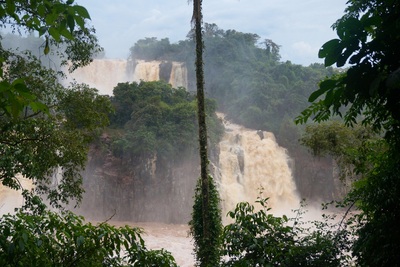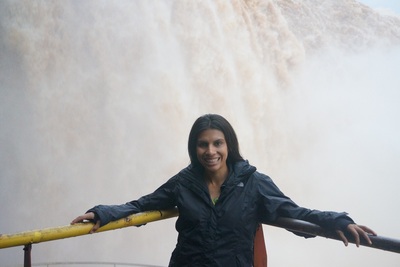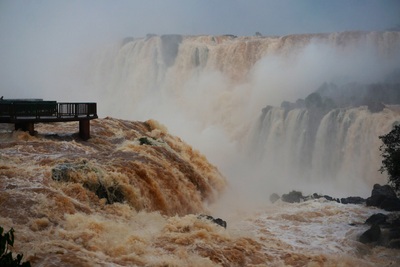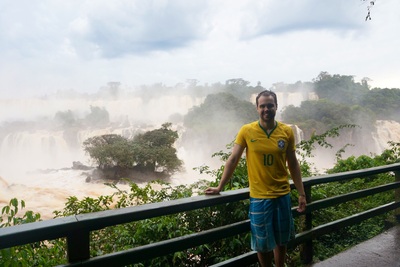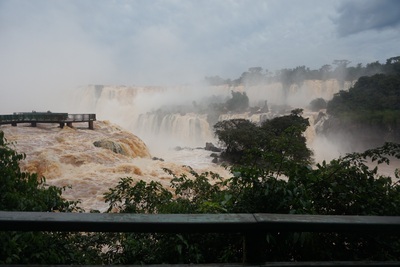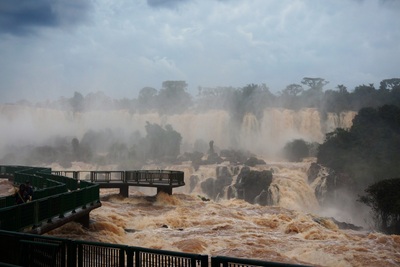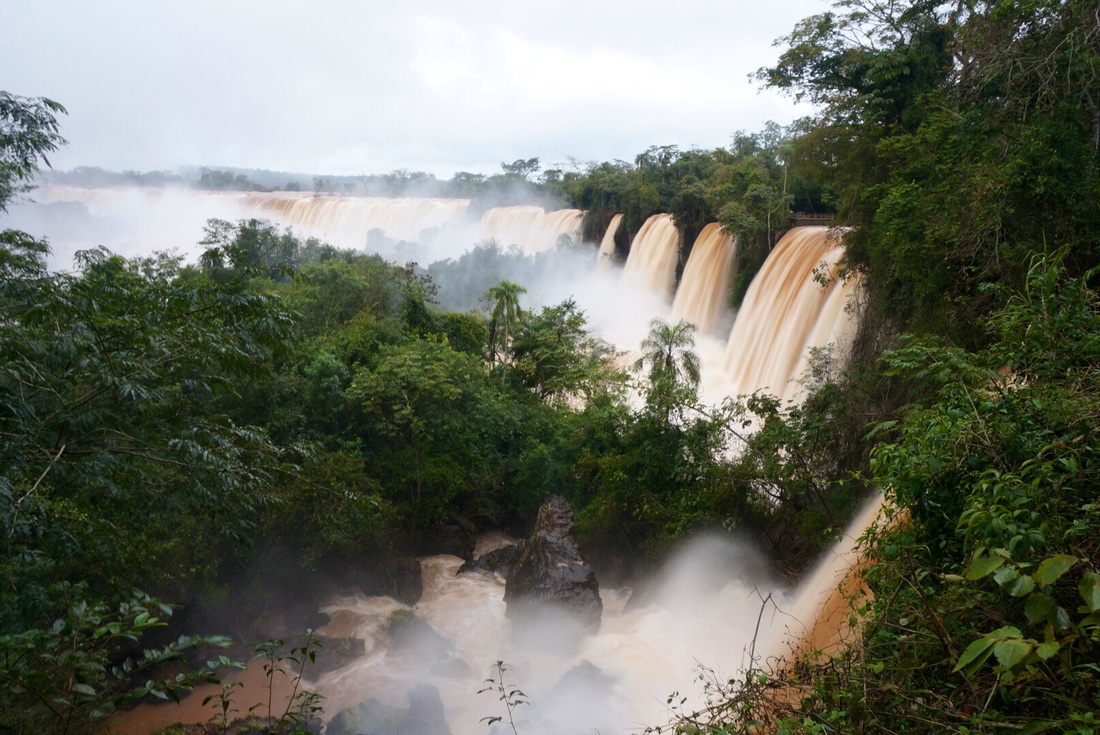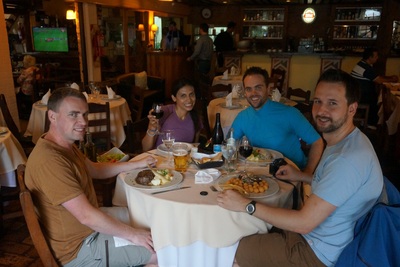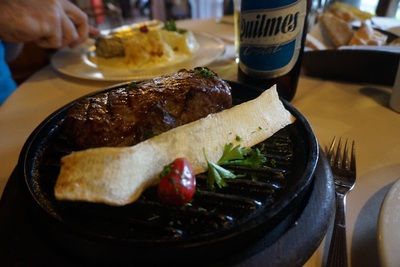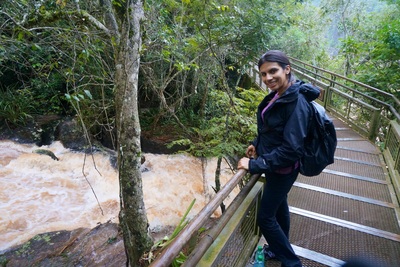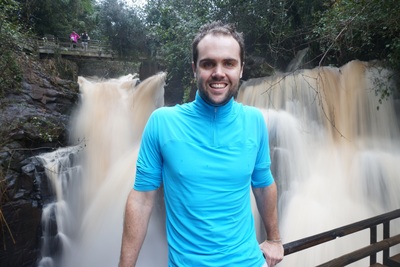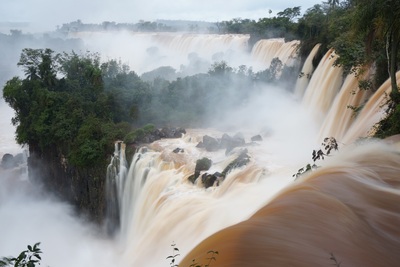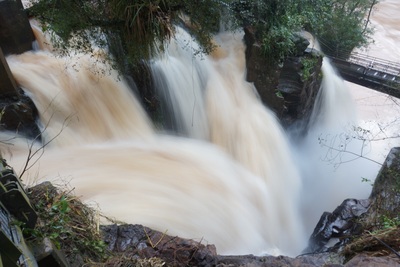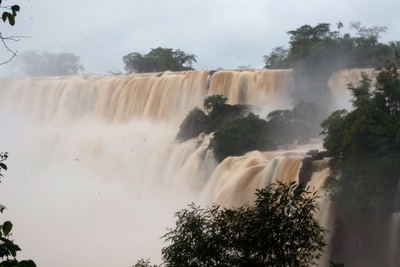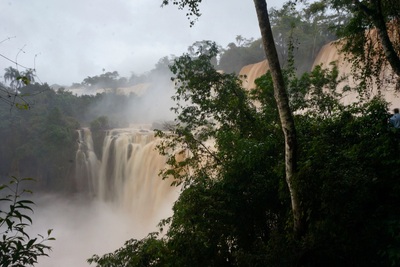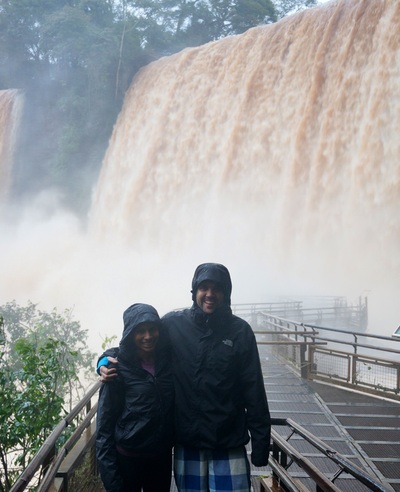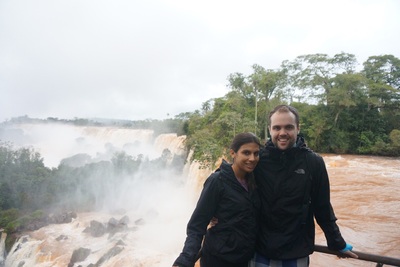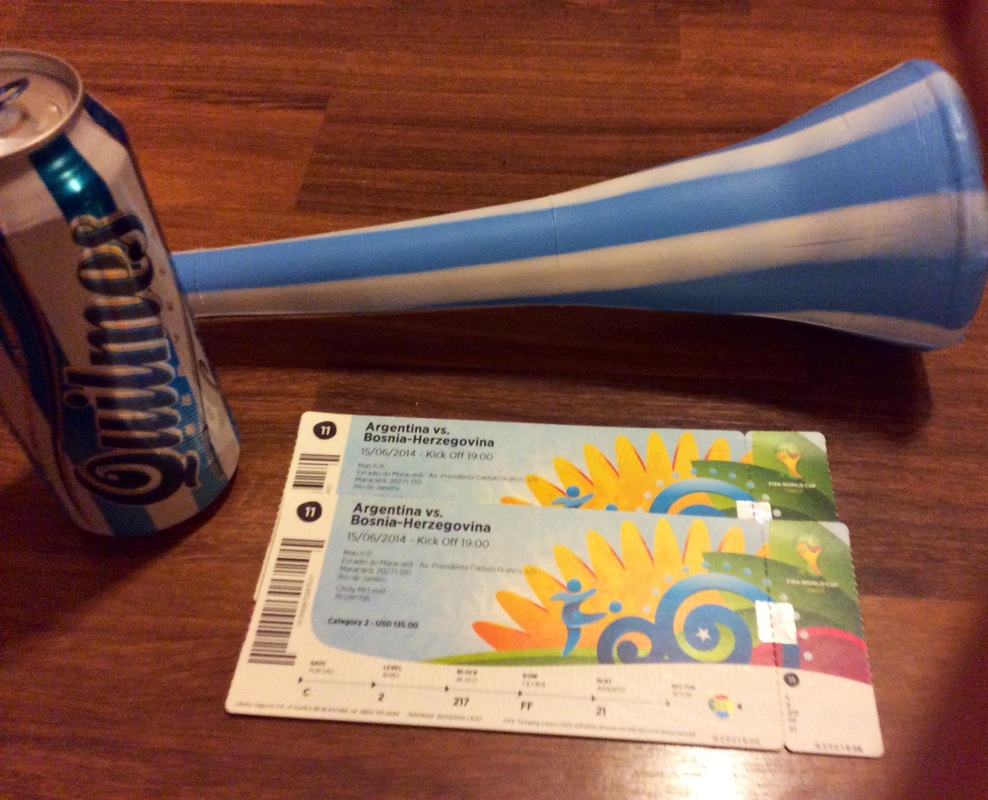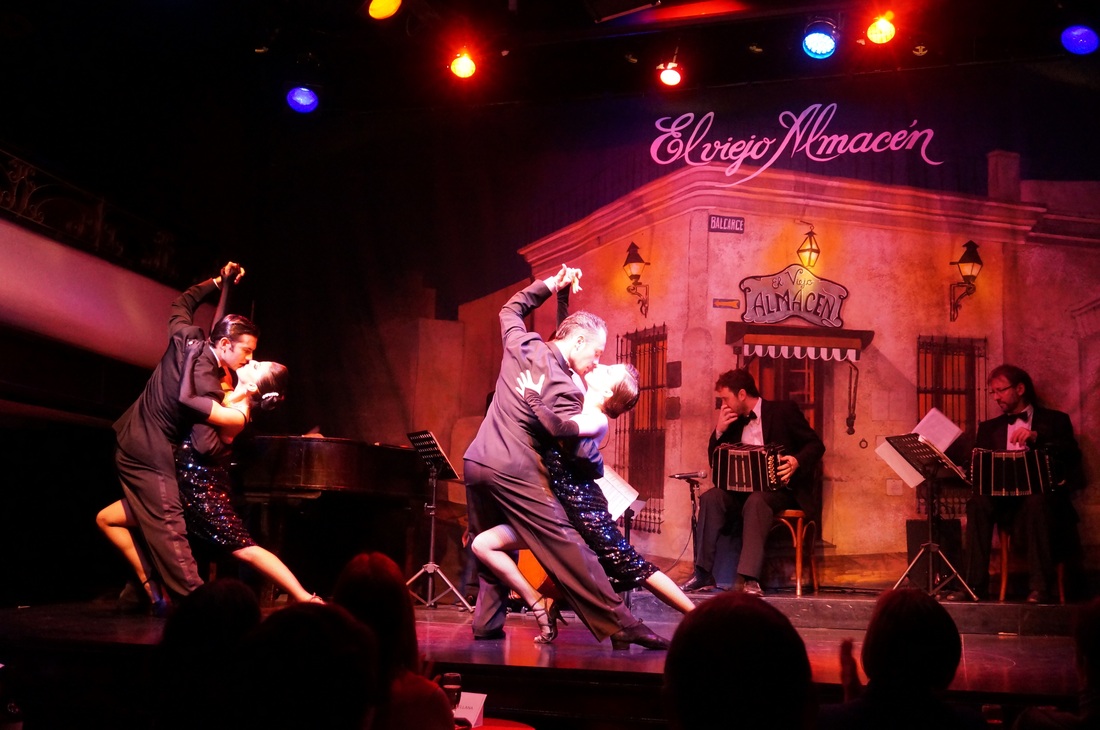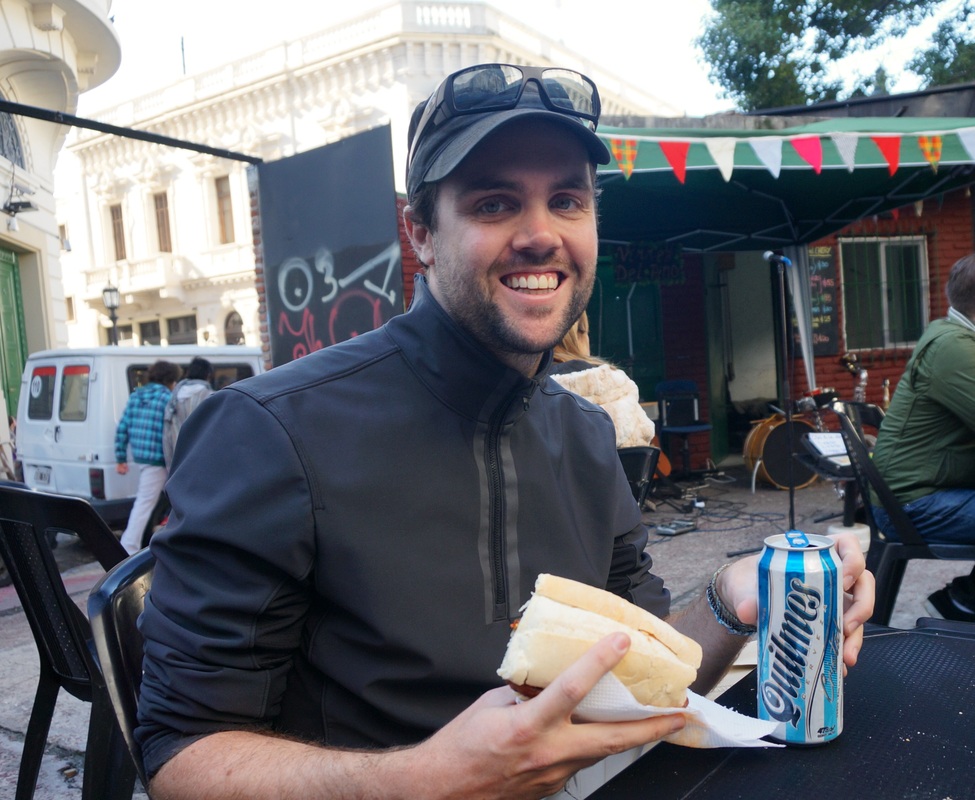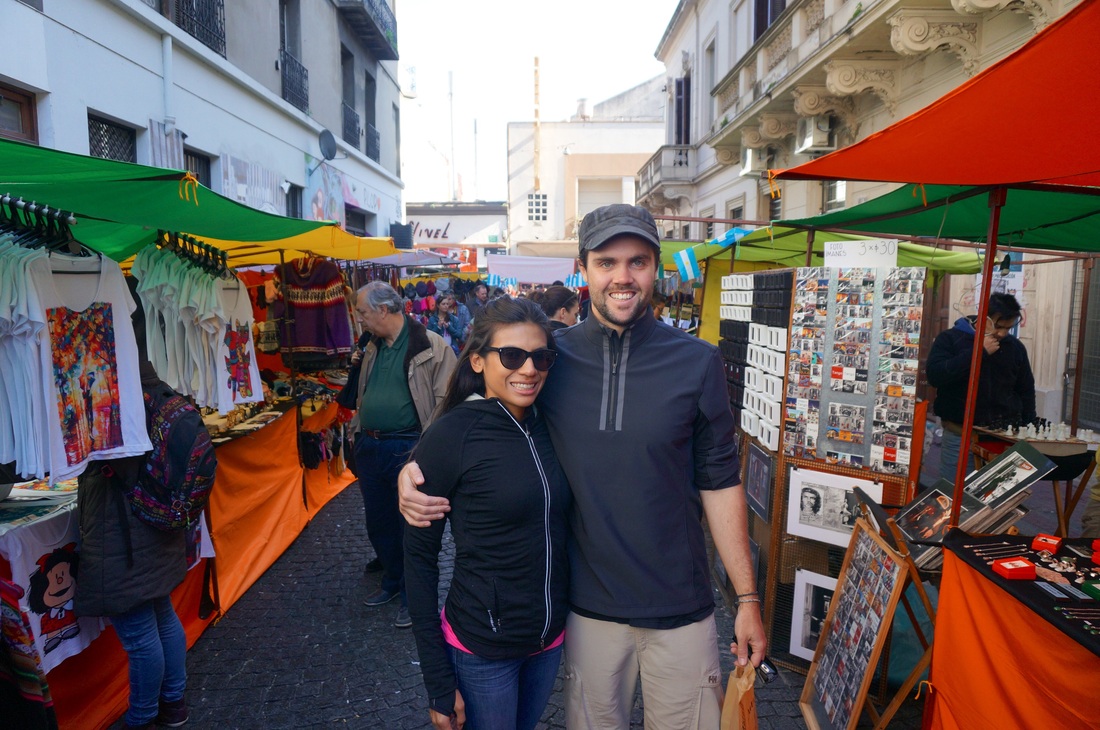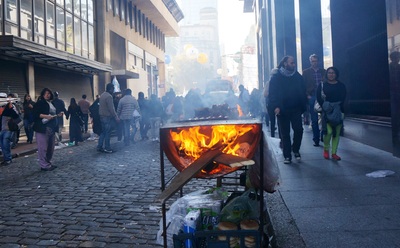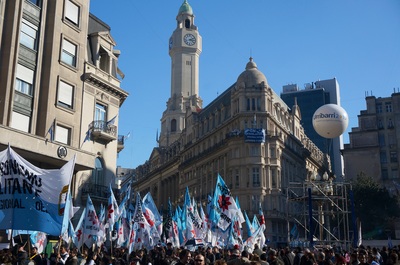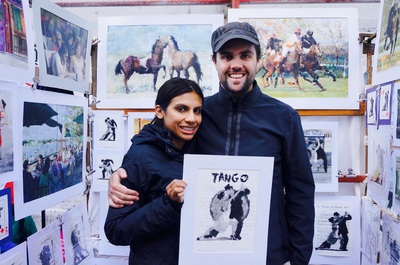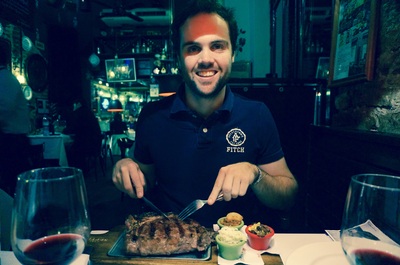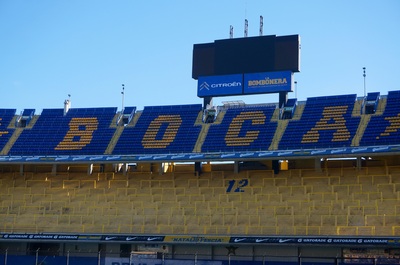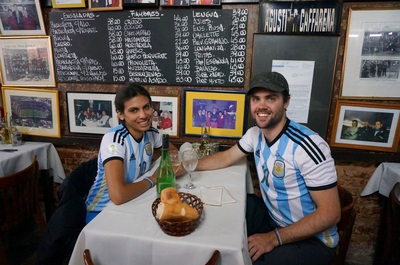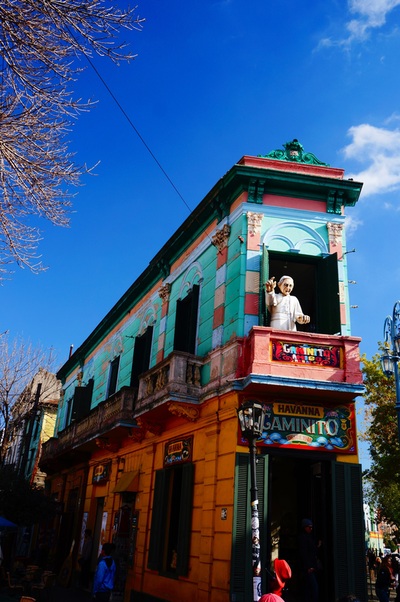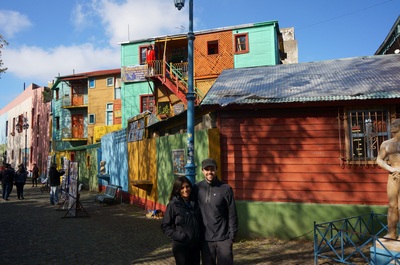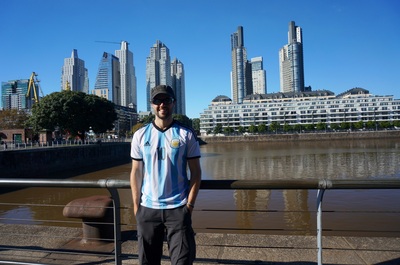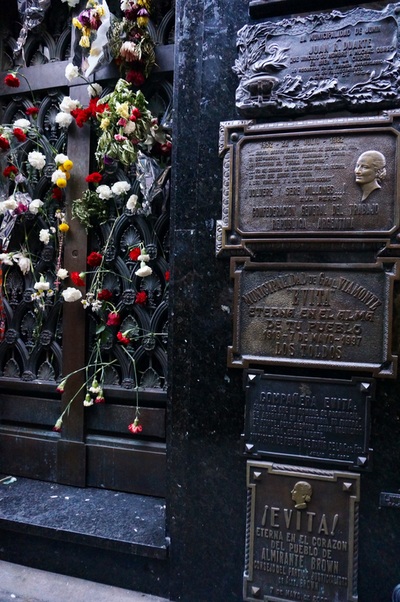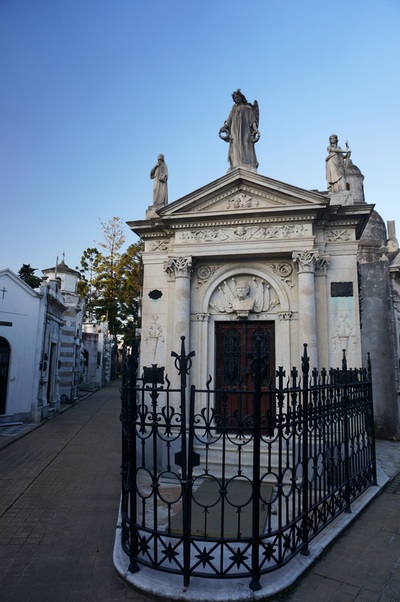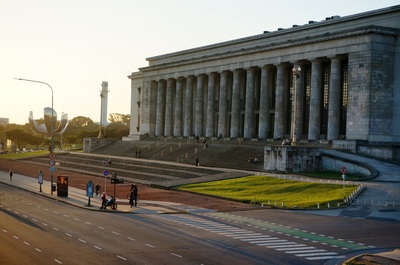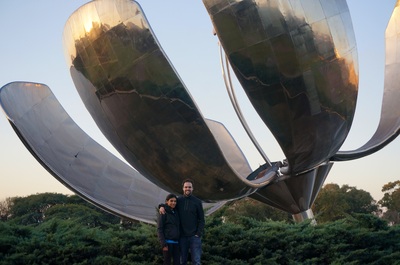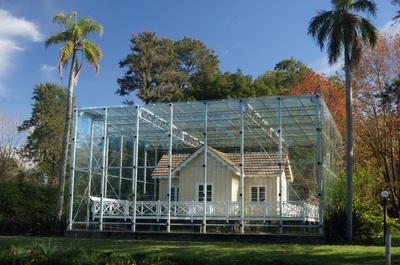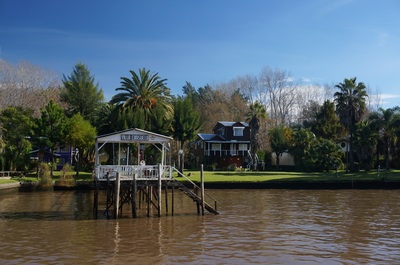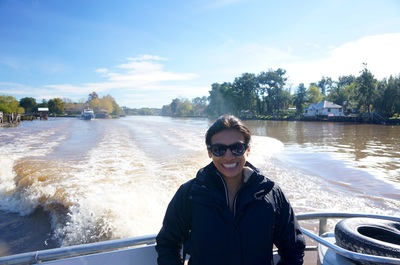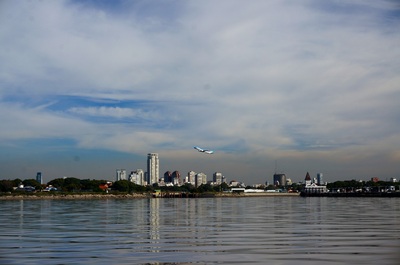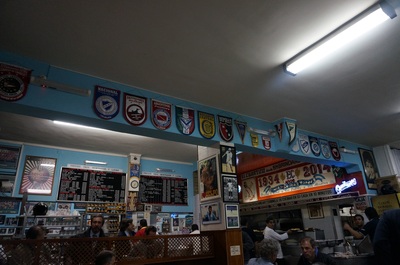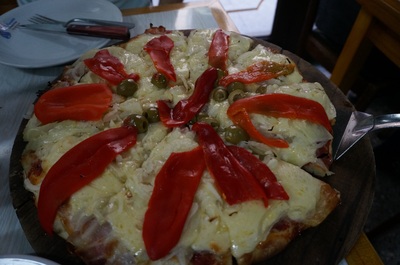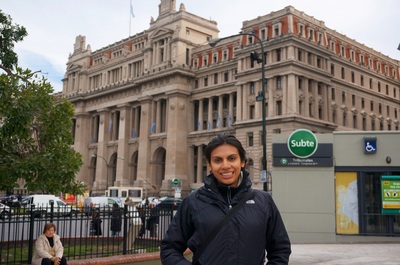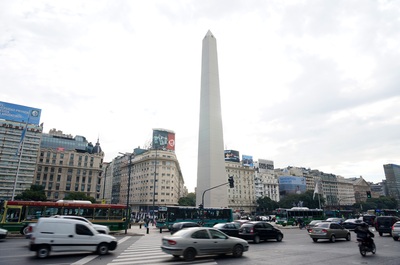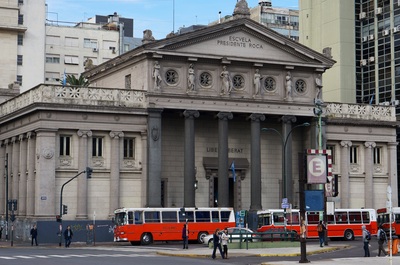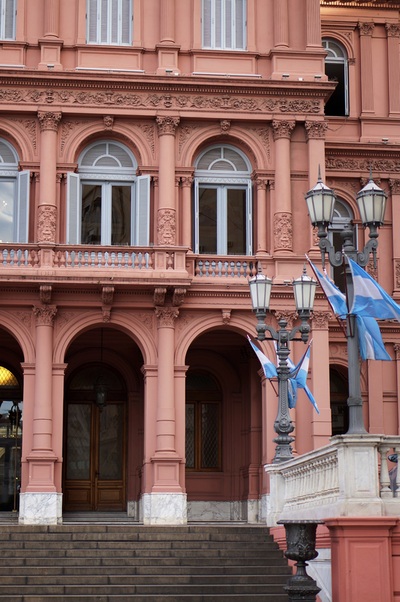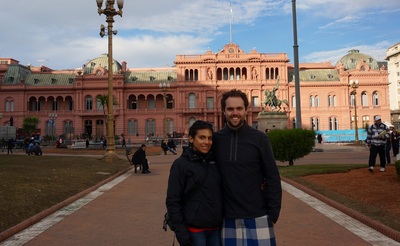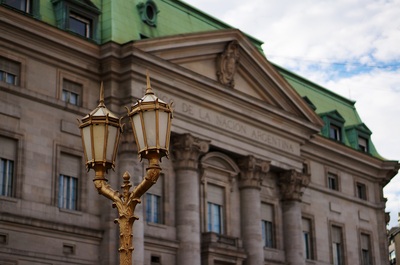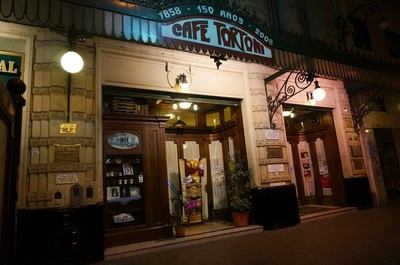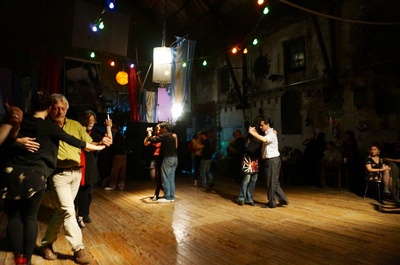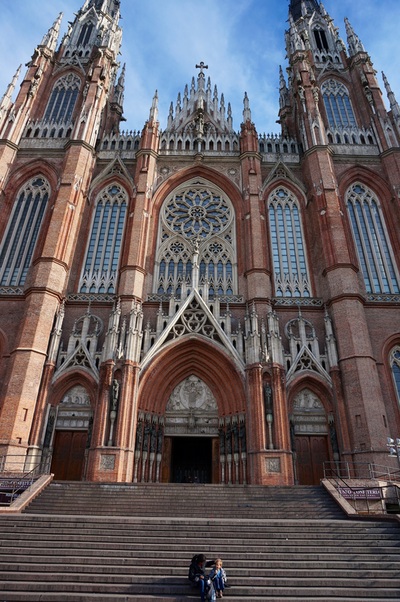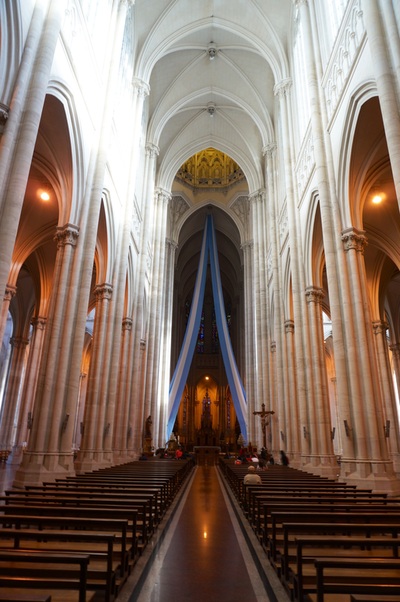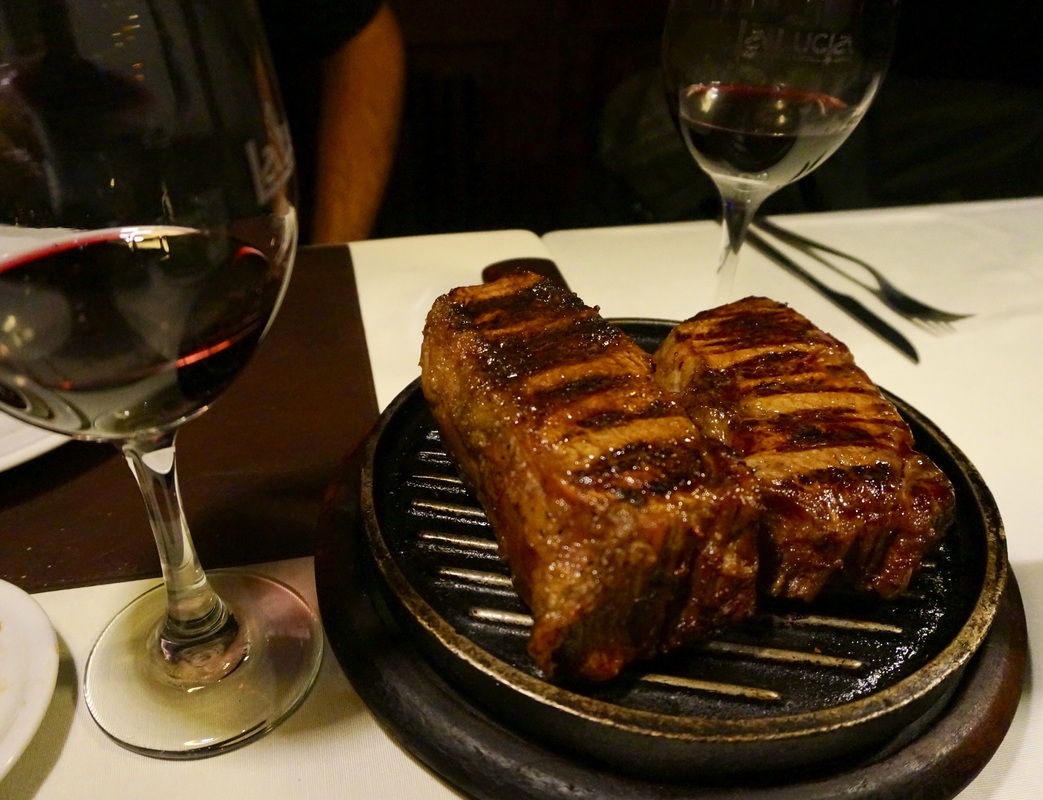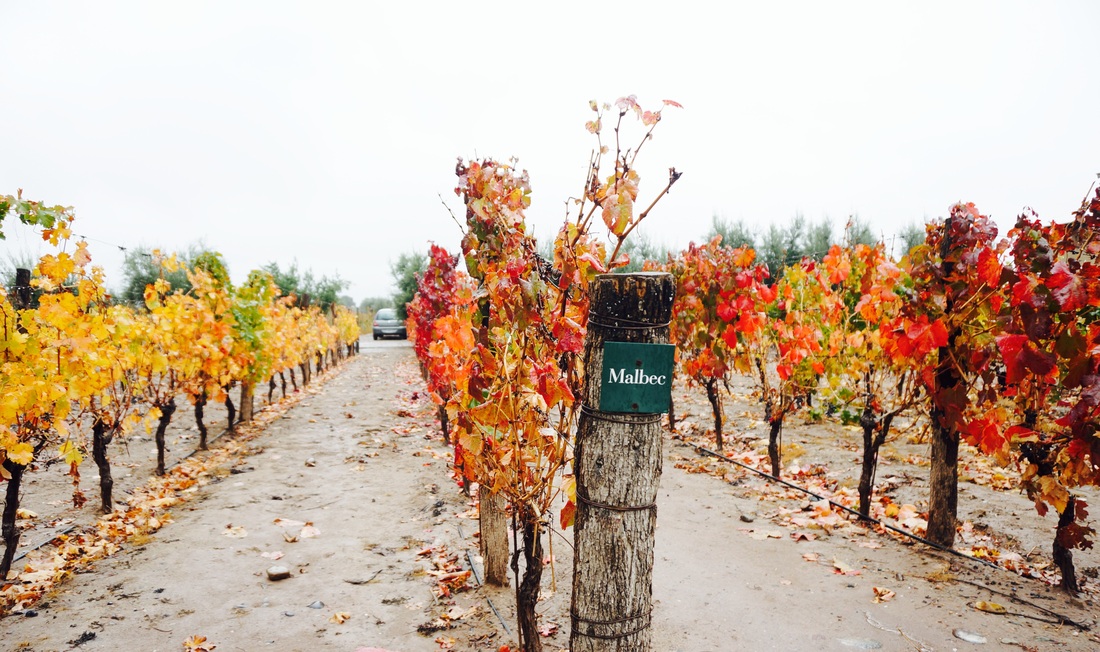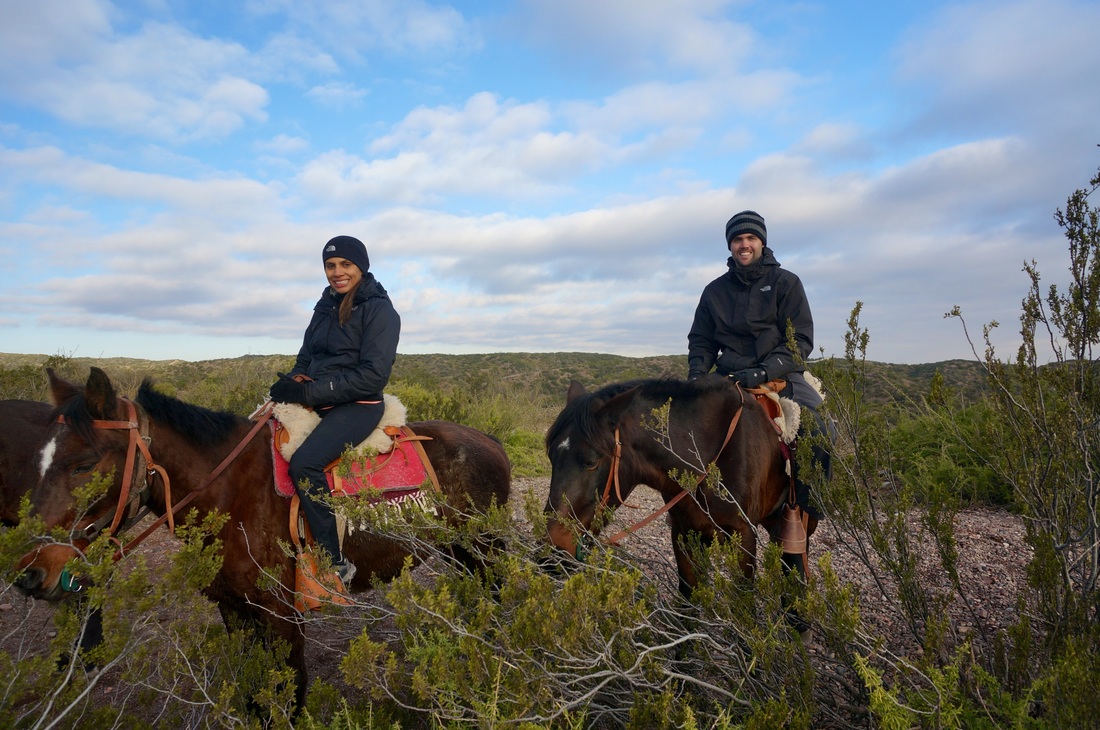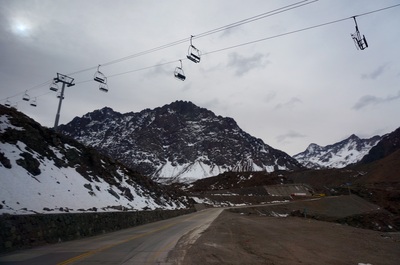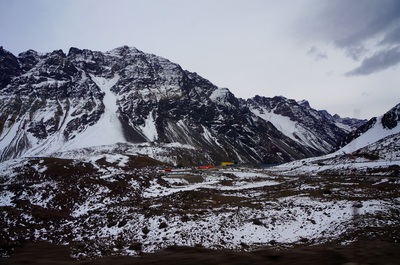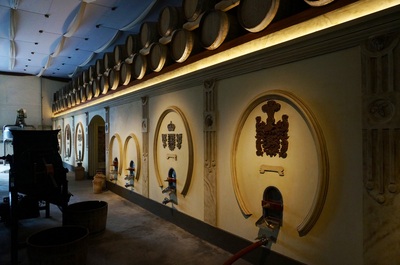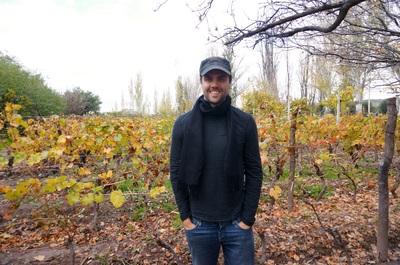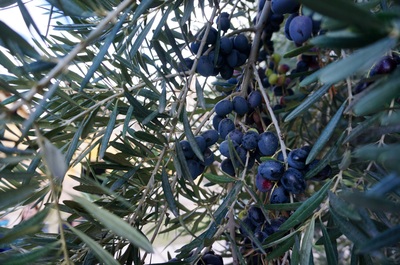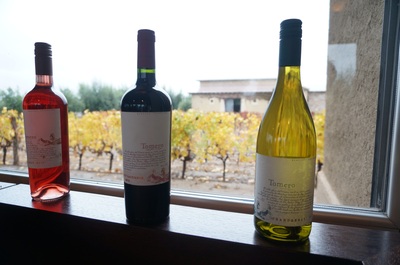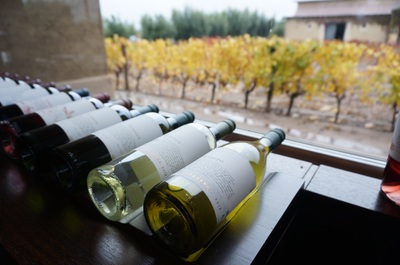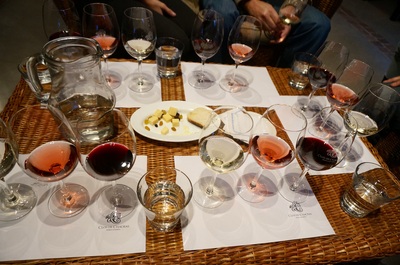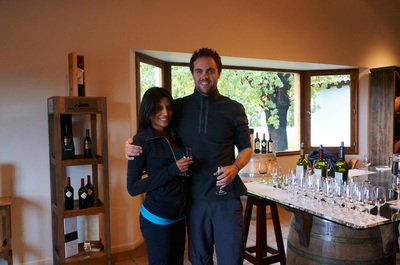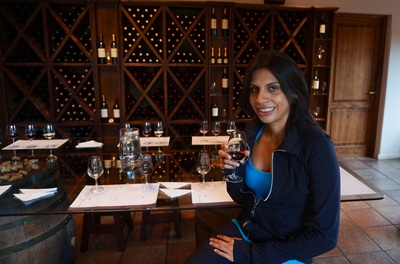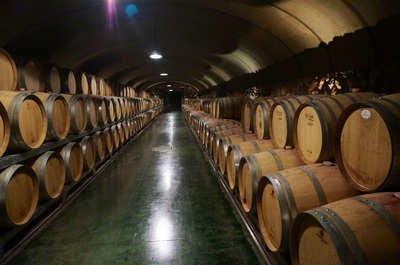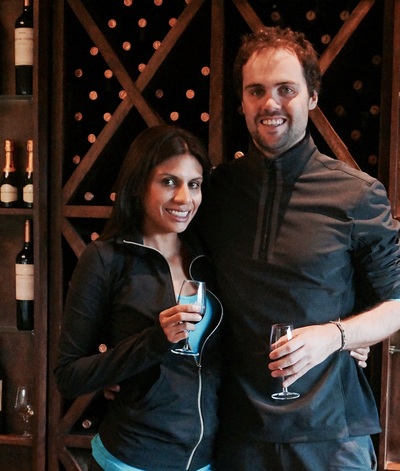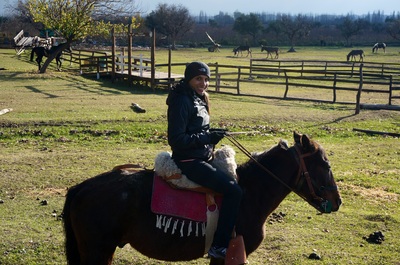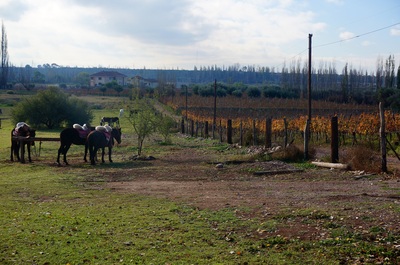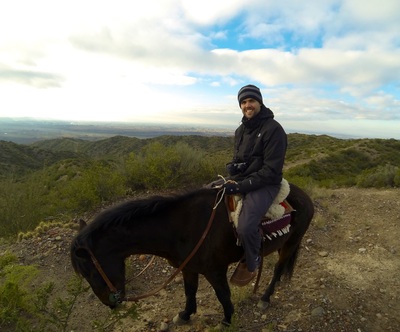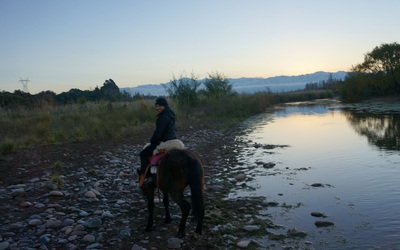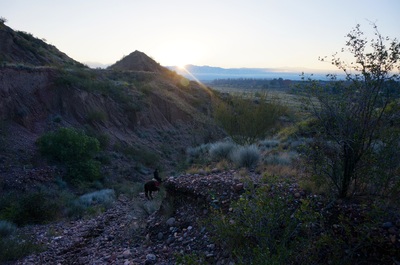The Iguassu Falls sit on the Brazil-Argentina border near Paraguay and can be seen from both sides of the border. We arrived in Foz do Iguacu, the town on the Brazilian side, a couple of hours before the opening game of the World Cup, and headed straight to a sports bar to cheer on Brazil with the locals. The game got off to a bad start with a Brazil own goal but the atmosphere lifted as Brazil finished the game by putting three goals in the right net.
As it turned out, this was both a good and a bad time to visit Iguassu Falls. Good because torrential rain in the feeder areas during the previous week meant water was flowing over the falls at record levels (to be exact, at 33 times the usual rate, smashing the previous 1992
record). Bad because as a result the river below the falls had risen substantially, meaning the water had less distance to fall and had a distinct brown color. The Brazil side of the falls, which offers the more panoramic perspective from a higher position, was still fully open, and the views were incredible. While on the Brazil side, we took a boat trip under the falls, getting completely soaked.
record). Bad because as a result the river below the falls had risen substantially, meaning the water had less distance to fall and had a distinct brown color. The Brazil side of the falls, which offers the more panoramic perspective from a higher position, was still fully open, and the views were incredible. While on the Brazil side, we took a boat trip under the falls, getting completely soaked.
As a result of the record water flow, a few of the trails on the Argentinian side of the falls were closed. This led a lot of people to decide it wasn’t worth the effort to cross the border. A key factor in our decision to go ahead and do it was the promise of one more Argentinian steak lunch. After overindulging on beautifully cooked meat and matching Malbec, we needed a nice long walk, and the trails around the Argentinain side of the falls were as good a place as any to do it. By affording us the opportunity to get much closer to the falls, the Argentinian side proved to be at least as impressive as the Brazilian side, so if you visit you really need to do both.
After filling our day pack with Argentinian colored face paint, beer, and musical instruments, we crossed the border back to Brazil more excited than ever about our first World Cup game the next day, watching Argentina play at the Maracana. There’ll be plenty about that, and the rest of our World Cup experience, in our next post.
